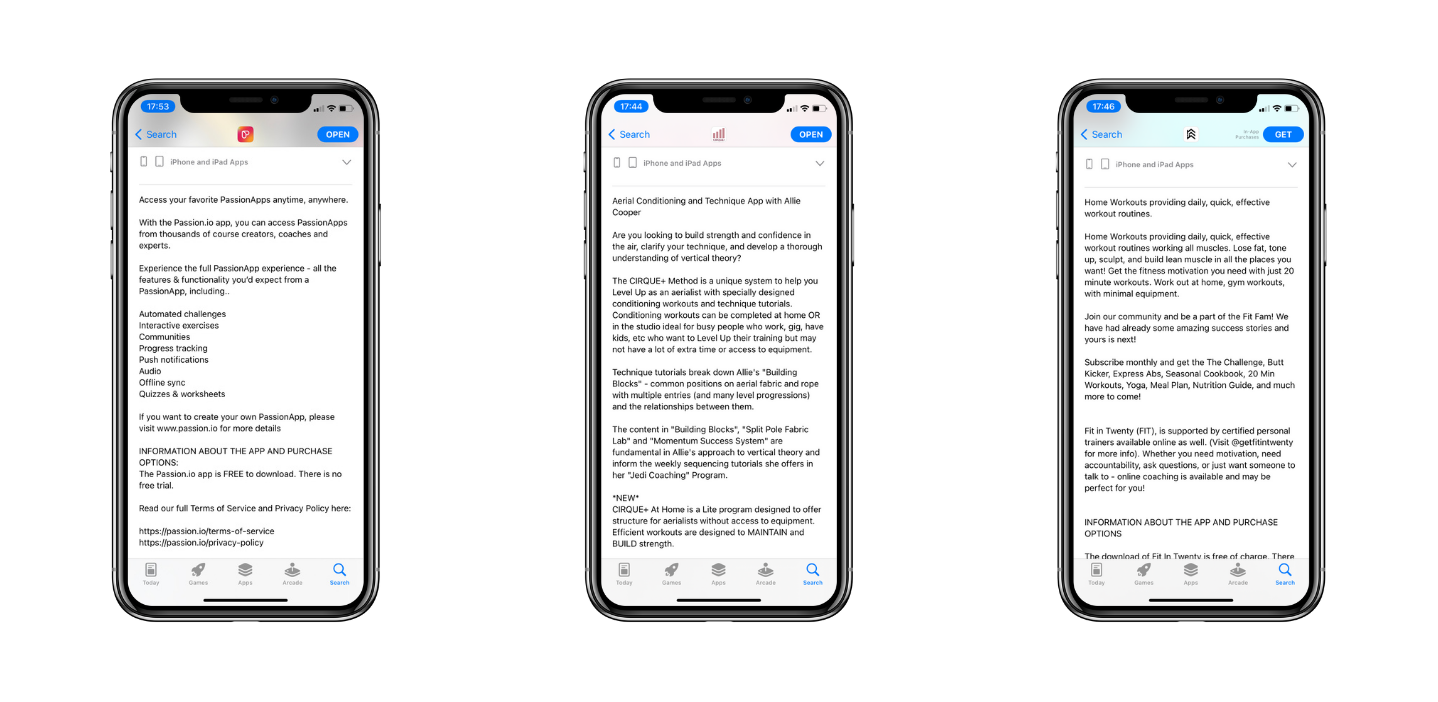A compelling app description can significantly boost your download rates and conversion. In today's competitive app marketplace, your description needs to persuade potential users that your app solves their problems better than any alternative.
IN THIS ARTICLE
1. What is an App Description?
2. Keys to be successful
3. What to include
4. What NOT to include
1. What is an App Description?
Your app description serves as your digital sales pitch in the app stores. Here's what you need to know:
Character Limits:
- Apple App Store: Up to 4,000 characters (expanded from previous limits)
- Google Play Store: Up to 4,000 characters for full description
- Google Play Short Description: 80 characters (crucial for first impressions)
Visibility Factors:
- Only the first 2-3 lines appear before the "Read More" button
- These initial 160-170 characters are your most valuable real estate
- 90% of users make download decisions based on the visible portion without expanding

Algorithm Considerations:
- Both stores now prioritize keyword relevancy over keyword density
- User engagement with your description affects overall app ranking
- Clear, scannable text outperforms dense paragraphs
2. Keys to be successful
-
Structure for Success
- Start with a hook: Begin with your most compelling value proposition
- Follow the AIDA formula: Attention, Interest, Desire, Action
- Use progressive disclosure: Most important information first, details later
Readability Techniques
- Short paragraphs: 2-3 sentences maximum
- Bullet points: For features and benefits
- Strategic emojis: To guide the eye and highlight key points (but don't overuse)
- Subheadings: To create clear sections
Keyword Strategy
- Integrate primary keywords naturally in the first paragraph
- Use secondary keywords throughout the description
- Aim for 4-5 natural mentions of key terms in different combinations
- Avoid artificial insertion or repetition that disrupts readability
3. What to include:
Must-Have Components
- Value proposition: What unique problem does your app solve?
- Key features with benefits: Not just what it does, but how it helps users
- Social proof: User testimonials, download numbers, awards, press mentions
- Credibility markers: Your expertise or background (if relevant)
- Clear call-to-action: What should users do next?
Effective for Conversion
- Problem-solution framework: Identify pain points, then show how your app solves them
- User-centric language: Focus on "you" rather than "we" or "our app"
- Concrete examples: Show specific use cases rather than general statements
- For multiple subscription tiers: Include brief explanations of different plans without mentioning prices
Our Pro Plan includes unlimited access to premium video content and advanced progress tracking, while our Starter Plan offers essential features for beginners looking to test the waters.
4. What NOT to include
Prohibited Content
- Exact pricing: Prices vary by region and currency; let the app store display appropriate local pricing
- Future features or content: Descriptions must reflect current app functionality, not planned updates
- Inappropriate terms: References to COVID-19, pandemic, quarantine, or other sensitive topics
- Trademarked names: Avoid mentioning competing platforms or brands without permission
- Programming symbols: Characters like ~, //, /*, ⟨, ⟩ can break formatting in app stores
Restricted Terms to Avoid
- Popular platforms: Facebook, Instagram, Twitter, TikTok, YouTube, WhatsApp, Zoom
- Tech companies: Apple, Google, Amazon, Microsoft
- Operating systems: iOS, Android, Windows
- Currency symbols: $, €, £, ¥ or currency codes (USD, EUR, GBP)
- Medical claims: Especially without proper regulatory backing
- Placeholder language: "Coming soon," "under construction," "in development"
Final Thoughts
Your app description is often the final deciding factor before a download. Invest time in crafting and refining it to ensure it effectively communicates your app's value while following all platform guidelines.
Remember that app stores regularly update their algorithms and policies. Stay informed about changes and adjust your description accordingly to maintain optimal performance and compliance.
By following these updated guidelines, you'll create an app description that not only drives more downloads but also attracts the right users who will engage with and value your app.
